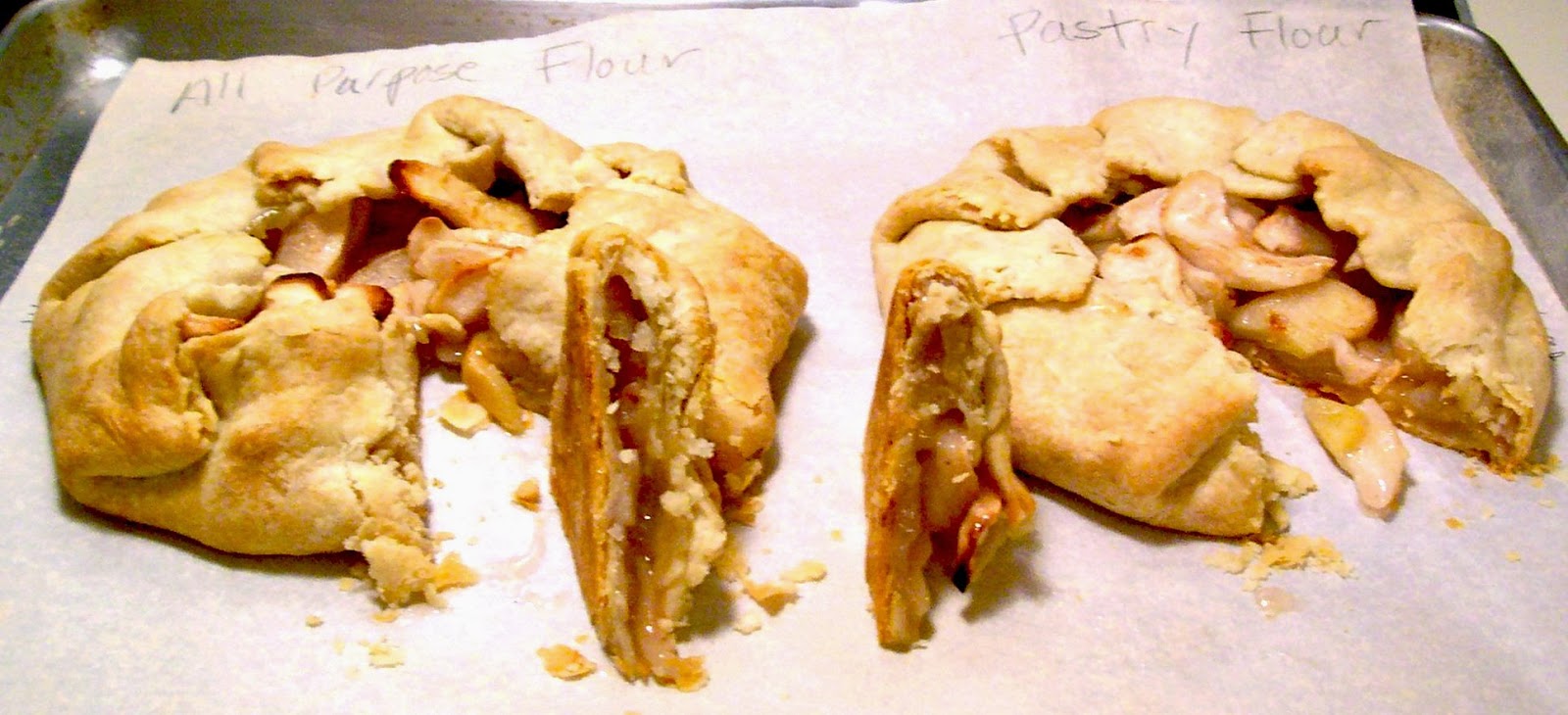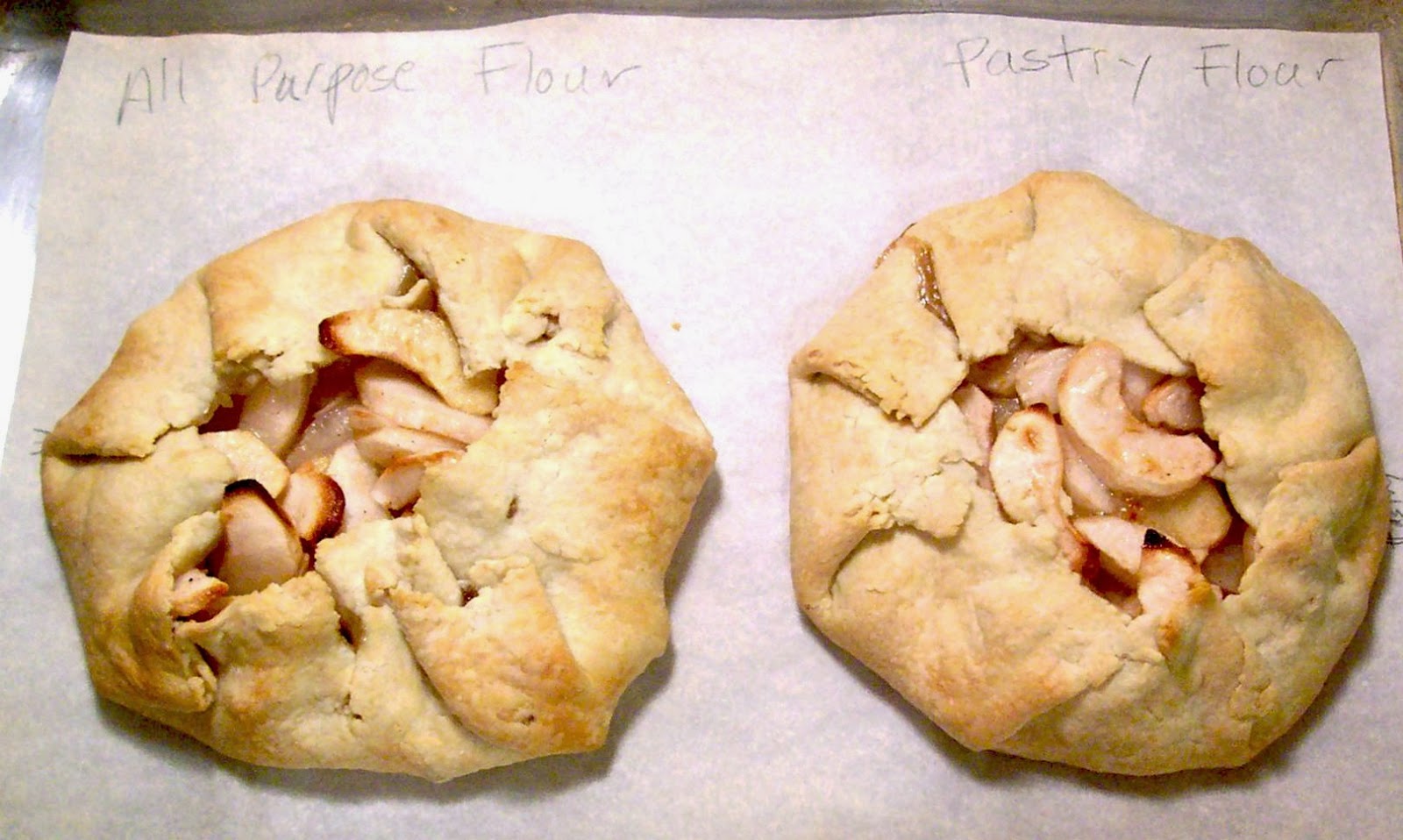I use pastry flour in many of my recipes, especially when making pie (pastry) dough. I often get asked if it’s really necessary to use pastry flour and if it’s OK to substitute all purpose flour instead. My answer is that if you can easily purchase pastry flour, then please give it a try!
The home baker has unfortunately been led to believe by most cookbooks that all purpose flour is for all purposes, but in reality, it is a flour that is blended to be sufficient for a variety of products, but not the best for most breads and pastries. Commercial bakeries rarely use all purpose flour, because they have a distinct flour for every baking purpose. Here are a couple of links to commercial bakery sources that will give you an idea of the products available to commercial bakers: North Dakota Mill and Progressive Baker. Of course, it’s not practical (or even possible) for the home baker to purchase a huge assortment or flours, but I do like to use a couple of specialty white wheat flours for use at home, namely, bread flour and pastry flour. Today’s article is about the latter.
 |
| My pastry flour: Maple Leaf Pastry Flour |
Pastry flour is an unbleached low protein flour used for cookies and pastries. The protein in the flour is what forms gluten when combined with water (or other water-containing liquids) and mixed or kneaded. The more the dough or batter is mixed, the more gluten strands are developed, producing a stronger dough. Generally speaking, when making yeast breads, you want to develop a strong dough and therefore will use a flour high in protein. For a flaky, tender pie dough and light crispy cookies, pastry flour is called for. We are fortunate in Utica, NY in being able to purchase good quality, inexpensive (around $4 for a 5 lb. bag) Maple Leaf Pastry Flour at a few area grocers: Chanatry’s, Price Chopper and Broad Street Cash and Carry (Avico Spice). King Arthur also has an unbleached cake/pastry flour available, but it’s much more expensive. Don’t use bleached cake flour as a substitute for pastry flour.
A big advantage of using pastry flour is that if you accidentally over mix, there is not as much gluten to have to worry about getting overdeveloped. When making pie dough with all purpose flour, you have to be very careful, as it can get over worked very easily, causing your pie crust to spring back when rolling and/or shrink during baking, leading to a tough thick crust.
I am going to share with you my slightly scientific experiment to demonstrate the quality differences between using pasty flour and all purpose flour in a basic pastry crust.
The experiment:
I made two batches of pastry dough, one with pastry flour and the other with all purpose flour. I then rolled the dough, and made identical apple crostatas out of each. Then baked and taste tested them both (the best part).
I weigh flour for greater accuracy, which is especially helpful with pastry flour. If you don’t have a scale, I give approximate volumetric measurements. For measuring the pastry flour without a scale, stir the flour and gently scoop into the measuring cup. Level the top with a flat edge. For all purpose flour, don’t stir before measuring. I highly suggest getting a kitchen digital scale -they are extremely inexpensive.
Video showing how to make the crostatas.
Crostata Pastry Dough Recipe
8 oz. (~1¾ cups) Pastry Flour(See note above in red) or 8 oz. All Purpose Flour(see note above in blue)
4 oz. Cold Butter (1 stick or 8 tablespoons)
¼ cup Cold water
For complete instructions, filling recipe and video, please visit Susan’s Pie Crust and Apple Pear Pie page.
  |
| All Purpose Flour on left, Pastry Flour on right |
Results
- The good news is that both of these were delicious.
- It’s hard to tell from the pictures, but the one made with pastry flour was more tender, delicate and flaky. The one on the left (all purpose flour) was chewier but still quite acceptable.
- The pastry flour version was easier to roll out thin.
- The pastry flour crust had a softer bite and was enjoyable to eat with or without any filling attached.
- Bottom crust- no discernible differences.
Happy Baking!
